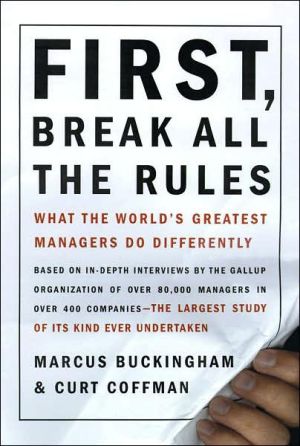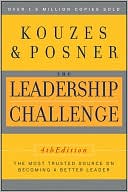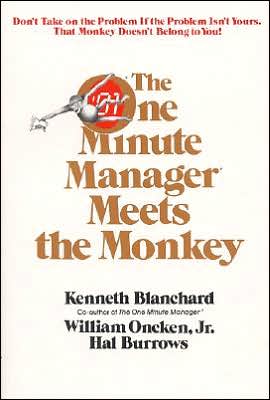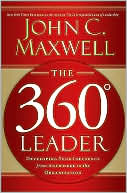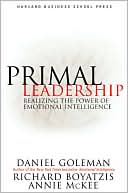Influence without Authority
The Classic Guide to Influence\ Now Fully Revised & Updated!\ "If you want to be a successful leader at any level, you must learn the mastery of managers and groups without using formal authority. You need the ideas and skills this book delivers."\ —Ram Charan, author of the bestselling books Execution and Confronting Reality\ "This book manages to do the near impossible...It draws on the wisdom of good leadership studies to provide tools to influence people and events at work regardless...
Search in google:
In organizations today, getting work done requires political and collaborative skills. That’s why the first edition of this book has been widely adopted as a guide for consultants, project leaders, staff experts, and anyone else who does not have direct authority but who is nevertheless accountable for results. In this revised edition, leadership gurus Allan Cohen and David Bradford explain how to get cooperation from those over whom you have no official authority by offering them help in the form of the “currencies” they value. This classic work, now revised and updated, gives you powerful techniques for cutting through interpersonal and interdepartmental barriers, and motivating people to lend you their support, time, and resources. Publishers Weekly This guide by management consultant Cohen and Stanford University Graduate School of Business professor Bradford skillfully demonstrates, with numerous examples, how managers and other employees can achieve their career objectives--as well as those of their companies--by forming mutually advantageous alliances. Urging patient planning of strategies, the authors offer advice on coping with turf rivalries, handling delicate inter-level relations and tips on how to bypass rules and foster managerial flexibility and innovation. Macmillan's Executive Program dual main selection; Fortune Book club alternate. (Dec.)
Influence Without Authority\ \ By Allan R. Cohen \ John Wiley & Sons\ ISBN: 0-471-46330-2 \ \ \ Chapter One\ Why Influence: What You Will Get from This Book \ * * *\ One of the biggest challenges facing us in UBS-IB (UBS Investment Bank) is the ability to influence others over whom we have no direct authority. Flatter structures, globalization, and cross-functional teams have brought fresh challenges and having to influence people who have different styles or views makes the task even harder.\ Being able to influence one 's boss, peers, or top management is often quoted as a key reason for the success or failure of individuals. We all know what we want to achieve, yet are often unsure how to go about it or even who are the key people needing to be influenced. -Rationale for Course on Strategies for Influencing and Persuasion, MAST, UBS-IB\ This is a book about influence-the power to get your work done. You need to inf luence those in other departments and divisions, that is, people you can't order and control. You need to influence your manager and others above you, and you certainly can't order and control them!\ But you are not alone: Nobody has the formal authority to achieve what is necessary, not even with those who report to them. It is an illusion that once upon a time managers could make their direct reports do whatever was needed. Nobody has ever had enough authority-they never have and never will. Organizational life is too complicated for that.\ Yet, it is possible to have enough influence to make things happen-and this book will tell you how.\ You will learn how to move others in order to accomplish important objectives, in a way that benefits them as well as you and the organization. We build on a way of working that you already know, though it is easy to lose sight of how to create win-win trades when you are in difficult situations, or have to deal with difficult individuals, groups, or organizations in order to be effective. The book teaches you how to stop doing the things that get in the way of influence, and how to do what's required in these tough situations. It can dramatically increase your ability to get things done.\ When we first started writing about influence in the 1980s, we had to justify why we thought this was important to people at all levels of organizations. The leadership and managerial focus was on how to command better, how to give clear directions and ensure compliance. But the world was changing, and there was greater need for managing laterally and upward-along with less ability to just give orders downward. Today, we meet no one who works in an organization larger than 10 people who does not understand that gaining cooperation through influence is the lifeblood of contemporary work life. Anyone who has ever been charged with coordinating the efforts of many others knows the importance of influence and just how maddening it can be to need others to get work done, but not be able to move them. We have lost count of the people who hear the title of this book, Influence without Authority, and instantly say, "That's my life."\ Do you recognize your organizational life in any of these challenges?\ You have been asked to head a cross-functional task force and have to get people outside your area committed to the project, but they are not cooperating.\ You are on a cross-functional task force and are caught between loyalty to your department and the emerging recommendations of the task force.\ You are on a task force or workgroup assignment, and other members are leaving all the work to you, despite your pleas to pick up some of the slack.\ You are in product development and need the cooperation of a key person or department in marketing to test out a new product you are developing.\ You are in marketing, but can't get the regional managers or salesforce to think about the brand in any coherent way.\ You are in human resources, and have all kinds of ideas about how managers could be better at developing their employees, but they claim they are too busy to attend your programs.\ You have a great idea, but are in a lower organizational position and need approval from management to pursue it. Even if you could figure out who to talk to, they don't understand the problem and probably won't listen to you.\ You see how the company could be much more efficient in dealing with customers or suppliers, but other departments would have to do things differently-and they like things the way they are.\ You often have to ask colleagues to shift their priorities, to pay attention to your requests-giving you some of their precious "mind-share"-even to sacrifice a portion of their resources or to take a risk and use up some of their credits with others in the organization.\ You could be far more effective if you could figure out how to get your controlling boss off your back.\ You can't get the attention of your boss for anything; she is far too busy at endless meetings and dealing with "crises."\ You need your boss to support you and be willing to provide "f light cover" on the approach you want to use to handle a difficult customer.\ You have a talented person reporting to you who won't listen to your advice about how to handle difficult colleagues; as a result, he is far less effective than he could be.\ As these examples (and the endless number of others like them) illustrate, the organizational world is getting increasingly complex. (See Table 1.1 for the forces causing the greater need for influence.) Few people can get anything of significance done alone; as in the Tennessee Williams play, we are all "dependent on the kindness of strangers" [and colleagues]. This requires influence in three directions. Along with death and taxes, an inevitable certainty of organizational life is that everyone has a boss. In a flat organization, the boss may be a distant and benevolent resource and, in a more hierarchical one, the boss may be breathing down your neck: but no one escapes having a person officially responsible for him or her. Even CEOs have a Board and one or more sources of financing they must influence, not to mention the financial markets, the press, and other organizations needed to create or sell company products.\ Similarly, virtually everyone in organizations has peers to deal with. There are very few jobs where a person works completely solo. Most are dependent upon, and important to, a variety of colleagues.\ Finally, some people also have responsibility as supervisors of others-the bosses to all those subordinates just mentioned. These managers are expected to utilize the talents of their subordinates to see that the work their area is assigned gets done.\ Therefore, those who keep their heads down and only work within their immediate areas will slowly become extinct. Whatever your job, you are expected to join your colleagues in doing important work, which will lead you to influence and be influenced. You will need to know how to sell important projects, persuade colleagues to provide needed resources, create satisfactory working relationships with them and their managers, insist that your boss respond to issues that may not appear important to him or her, and, in turn, give thoughtful responses to requests associates make of you. The person asking something of you today may be the very one you'll need next week.\ With so much interdependence required, wielding influence becomes a test of skill (Table 1.1). Going hat in hand to throw yourself at a colleague's mercy with a request is seldom a powerful or very effective option. Of course, trying to bull your way through by sheer nerve and aggressiveness can be costly as well. Antagonizing crucial peers or superiors is a dangerous strategy, since they can so easily come back to haunt you.\ When you already know how to get needed cooperation, just do it. But if you are stuck, or frustrated, or want to be sure how best to approach someone, then this book has a universal model that can be applied in any organization, to any person or group, in any direction, to get results.\ What we have to teach you is based on a few core premises. These are not exotic or unfamiliar, though we have seen hundreds of people abandon what they know when they get stuck, or turned down too often:\ Influence is about trades, exchanging something the other values in return for what you want.\ Relationships matter; the more good ones you have, the greater the odds of being able to find the right people to trade with, the odds of having some goodwill to help the trades along.\ Influence at work requires that you know what you are doing, have reasonable plans, are competent at the task at hand-but that often isn't enough. It is just the price of admission.\ You have to want influence for the ultimate good of the organization. In the short term, that may not be necessary, but genuine care for the organization's goals makes you more credible, more trustworthy, keeps you from being seen as only in it for yourself, and prevents those whom you have influenced from ruining your reputation or seeking retaliation.\ Your difficulty with influence often rests, unfortunately, with you. Sometimes it is just a matter of not knowing what to do, and that is relatively easy to f ix. But at certain critical moments, all of us do things that keep us from being as effective as we could be. While occasionally the other party is truly impossible, far more often, the source of the influence deficit is something that you are doing-or failing to do.\ Just about everyone is potentially much more influential than they think they are.\ Why an Influence Model?\ You already know a lot more about influence than you realize. Some of the time, you can just ask for what you need, and if the other person or group can respond, they will. Sometimes you have to work a little harder to figure out how to get what you want. You may not think about it, but you instinctively understand that when someone helps you, you are expected sooner or later to somehow pay them back, in some reasonable way. This kind of give and take-formally called exchange-is a core part of all human interaction, and the lubricant that makes organizations able to function at all.\ Although the concept of give and take is in many ways simple and straightforward, the process of exchange is more complicated. When you already have a good relationship, you don't need conscious diagnosis, careful planning of your approach, or subtlety of implementation. Like the person who discovered that after all these years he was unknowingly speaking "prose," you probably already are instinctively doing much of what we describe here, especially when things are going well.\ Remember, an influence model-including careful diagnosis of the other's interests, assessment of what currencies you command, attention to the relationship-is only necessary when:\ The other person or group is known to be resistant.\ You don't know the other people and are asking something that might be costly to them.\ You have a poor relationship (or are part of a group that has a poor relationship with the group the other person belongs to).\ You are asking for something that could be a big burden to give.\ You might not get another chance.\ But look at all the times when these are the conditions you are facing, so that your natural understanding of give and take leaves you stuck. Despite your enthusiasm for what you are trying to accomplish, the harder you push the more you are met with resistance.\ We're going to show you how to get out of this kind of maddening bind, how to step back and figure out a way that will work.\ Barriers to Influence\ So why is it so hard to get influence at those times when your natural instincts and knowledge of how things work leave you stuck? (See Table 1.2 for a summary.)\ Some of what blocks influence is external to you, for example:\ Too great a power differential between you and the person or group you want to influence. All of the focus on influence assumes that you have no better than equal formal power (a position that gives you the right to give orders) in relation to those you want to influence. The book teaches you to find ways to increase your resources. But sometimes the difference is so great that you have little to offer.\ The people you want to influence have different goals and objectives from yours, leading to different priorities, and you can't find common ground. By their organizational roles, some people will not care about what you are trying to accomplish, because they have such different expectations. Sometimes they just have completely incompatible personal goals.\ The people you want to influence have incompatible performance measures and rewards. Similarly, by organizational role, they may be held accountable for and rewarded for things that won't let them respond to what you want. The measurement system may leave them with little latitude.\ The people you want to influence are rivals, or feel competitive and don't want you to succeed. If your success will be seen as somehow interfering with their success, you may not be able to get help even when they know it would be good for the company. Also, they might have such strong personal animosity toward you or your area that it clouds their judgment.\ These are objective reasons why it can be hard to get what you need for doing the good work you want to do. Occasionally, you can't overcome these barriers, no matter how skilled an influencer you are. However, we have discovered that far more often, the barriers are inside the influencer. You may not have the needed knowledge of the situation and skills to move the resistant person, or may not have the required attitudes and courage.\ These internal barriers include:\ Lack of knowledge of how to go about influencing when there are objective difficulties. As instinctive as some kinds of influence are, many people do not have a very conscious idea of how to go about it when the other person or group is not responsive. They don't think of influence as a kind of exchange, and don't understand how important it is to deliver something of value to the other person, rather than what they themselves value. They revert to emphasizing how wonderful what they want is, and forget that it has to appeal to something the other person or group cares about.\ Attitudes that blind you to important objective information that would help you. Do you think that you shouldn't have to try to influence others; they should just recognize truth (or a better mousetrap) and give in? Another attitude that gets in the way is the rapid writing off of anyone who doesn't quickly go along with a request, assuming that they are deficient in some important way. We will have a lot to say about this all-too-common barrier and how to overcome it. And another handicap is knowing what would move the other person but you can't stand people who want that, so you back off or become hostile.\ Fear of the other person or group and how they might react. Frequently, people recognize that to have influence they would have to say something that might get the other person or group angry, or wanting to retaliate. Out of fear, usually untested (and often unfounded), they decide they can't go ahead. Even the idea that pushing might make the other person not like you can paralyze some people.\ Inability to focus on what you need and how the other person could benefit from that. Sometimes people who want influence aren't very clear about exactly what their goals are, who they have to influence to accomplish their goals. This leads to stressing the wrong things and getting hung up on secondary, often symbolic, issues.\ (Continues...)\ \ \ \ \ Excerpted from Influence Without Authority by Allan R. Cohen Excerpted by permission.\ All rights reserved. No part of this excerpt may be reproduced or reprinted without permission in writing from the publisher.\ Excerpts are provided by Dial-A-Book Inc. solely for the personal use of visitors to this web site. \ \
Ch. 1Why influence : what you will get from this book3Ch. 2The influence model : trading what they want for what you've got (using reciprocity and exchange)15Ch. 3Goods and services : the currencies of exchange36Ch. 4How to know that they want : understanding their worlds (and the forces acting on them)56Ch. 5You have more to offer than you think if you know your goals, priorities, and resources (the dirty little secret about power)80Ch. 6Building effective relationships : the art of finding and developing your allies96Ch. 7Strategies for making mutually profitable trades121Ch. 8Influencing your boss147Ch. 9Influencing difficult subordinates170Ch. 10Working cross functionally : leading and influencing a team, task force, or committee188Ch. 11Influencing organizational groups, departments, and divisions200Ch. 12Influencing colleagues216Ch. 13Initiating or leading major change233Ch. 14Indirect influence246Ch. 15Understanding and overcoming organizational politics254Ch. 16Hardball : escalating to tougher strategies when you can no longer catch flies with honey269
\ Publishers Weekly\ - Publisher's Weekly\ This guide by management consultant Cohen and Stanford University Graduate School of Business professor Bradford skillfully demonstrates, with numerous examples, how managers and other employees can achieve their career objectives--as well as those of their companies--by forming mutually advantageous alliances. Urging patient planning of strategies, the authors offer advice on coping with turf rivalries, handling delicate inter-level relations and tips on how to bypass rules and foster managerial flexibility and innovation. Macmillan's Executive Program dual main selection; Fortune Book club alternate. (Dec.)\ \ \ \ \ Library JournalCohen and Bradford are business professors, the former at Babson College and the latter at Stanford, and both have extensive backgrounds in management consulting. Here, they have devised a number of scenarios to illustrate situations in which particular techniques of influencing co-workers can be utilized to effect a desired result. Very few real-world examples are employed, leaving the reader searching for some concrete applications of the techniques discussed. Consequently, the book reads more like an academic text on influence. Readers would be better served with Dale Carnegie's classic How To Win Friends and Influence People or Harvey MacKay's Swim With the Sharks Without Being Eaten Alive ( LJ 4/15/88). Recommended for academic and large public libraries.-- Richard Paustenbaugh, Indiana Univ. Libs., Bloomington\ \

